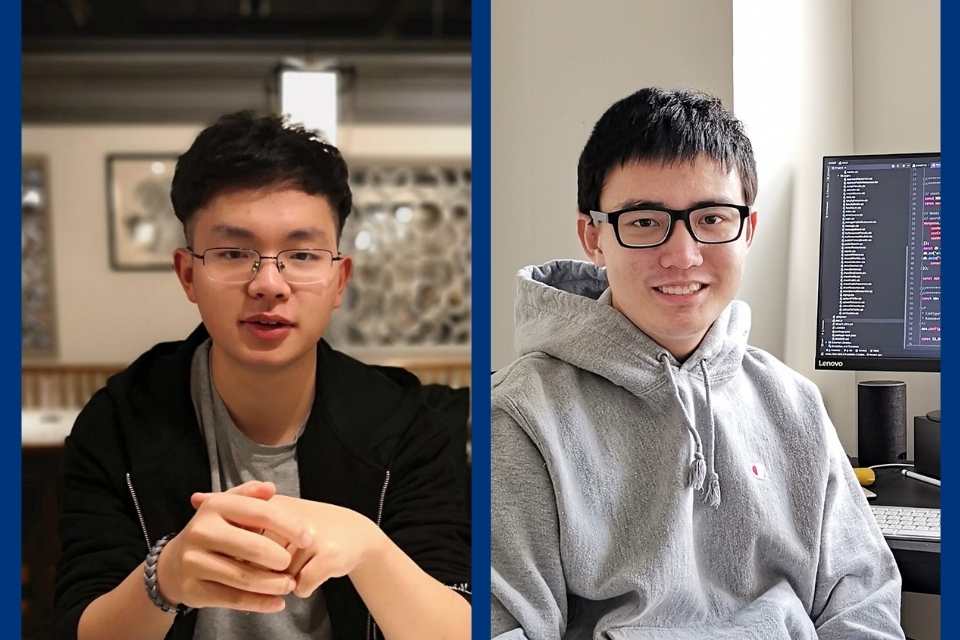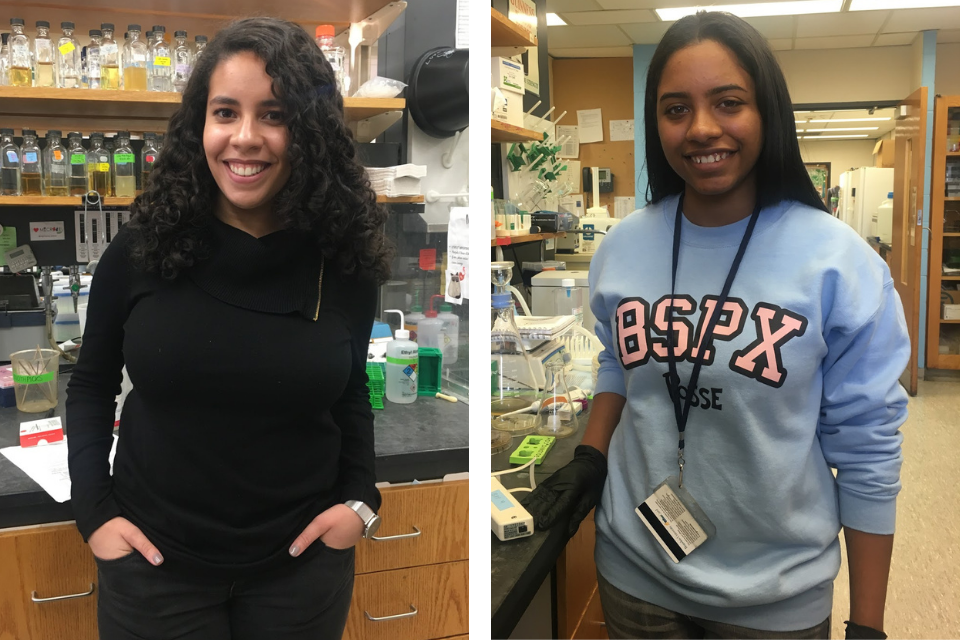Brandeis Alumni, Family and Friends
Students Help Shed Light on How COVID-19 Spreads
December 9, 2020
Undergraduate computer scientists at Brandeis are using machine learning and 3D modeling to add to our understanding of how COVID-19 spreads.

“If (there is) a new wave of a new virus, not necessarily coronavirus, our model can start analyzing and predicting its interactions and infections,” says Hangyu Du ’21, of Beijing.
Du and Feng Chen ’21, of Nanjing, China, are research assistants in the lab of Hongfu Liu, assistant professor of computer science, and Qingtian Mei ’21, of Guangdong, China, is a research assistant in the lab of Pengyu Hong, professor of computer science.
The students are contributing to a Brandeis research effort that is using machine learning to map COVID-19’s genetic code.
Predicting Spread as a Means of Prevention
Du and Chen are looking at different species to create a model that can help predict the spread of COVID-19 and detect potential protein-level interactions which help vaccine design. They have gathered research papers showing the potential of six different species — from dogs and cats to tigers — to become infected.
Chen says: “The first report of COVID-19 was in a seafood market. We don’t know if the virus can be passed from animal to animal or animal to human. How can this virus affect other species?”
Says Du: “There are so many mammals living near us and we don’t know whether they will get infected or not. If they get infected, can they infect humans? So if we can get a list of potentially affected animals around us, then that’s a way of protecting us.”
They are applying machine-learning techniques to sift through massive amounts of data and create a model that can help predict the spread of COVID-19. Their research compares the features of various coronaviruses, such as the one that caused the outbreak of SARS in 2003.
Complementary, and Collaborative, Research Projects
Mei’s research helps in understanding the way the virus enters a host cell. In Hong's lab, Mei is working on a 3D model of a key protein that allows SARS-CoV-2 to bind to ACE2, a protein on the surface of cells that acts as a receptor to the virus.
Mei says, “This could potentially show how the protein itself is interacting with the ACE2 receptor, and it can also be used as a prediction in how it will interact with our antibodies.”
All three students are applying to graduate school. Mei plans to pursue a master’s degree in computer science. Du plans to focus on data science, and Chen, on bioinformatics.
Du and Chen hope to submit a paper on their work in the coming weeks.
–Sophie Fulara ’21









